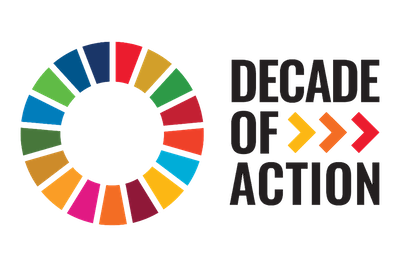FOCRAII (JJAS 2023) - Rainfall
Country Code
FOCRAII
Layer Parent Group
FOCRAII
Map Legend
[{"label":"Above Normal > 90%","color":"#002673"},{"label":"Above Normal 80 - 90%","color":"#00389b"},{"label":"Above Normal 70 - 80%","color":"#004cc3"},{"label":"Above Normal 60 - 70%","color":"#1f75ec"},{"label":"Above Normal 50 - 60%","color":"#1b85ff"},{"label":"Above Normal 40 - 50%","color":"#52adff"},{"label":"Above Normal 35 - 40%","color":"#89ceff"},{"label":"Above Normal < 35%","color":"#00000000"},{"label":"Below Normal < 35%","color":"#00000000"},{"label":"Below Normal 35 - 40%","color":"#ffffcc"},{"label":"Below Normal 40 - 50%","color":"#ffea9a"},{"label":"Below Normal 50 - 60%","color":"#fece6a"},{"label":"Below Normal 60 - 70%","color":"#fea245"},{"label":"Below Normal 70 - 80%","color":"#fc6932"},{"label":"Below Normal 80 - 90%","color":"#e92b22"},{"label":"Below Normal > 90%","color":"#c20425"}]
Public
True
Processing Statuses
["S","S","S","S"]Scenarios Layers URLs
["https://geonode.thinkbluedata.org/geoserver/gwc/service/wmts/rest/geonode:focraii_rf_jjas_2023_above_normal/geonode:focraii_rf_jjas_2023_above_normal/TBD_EPSG:900913/EPSG:900913:{z}/{y}/{x}?format=image/png","https://geonode.thinkbluedata.org/geoserver/gwc/service/wmts/rest/geonode:focraii_rf_jjas_2023_below_normal/geonode:focraii_rf_jjas_2023_below_normal/TBD_EPSG:900913/EPSG:900913:{z}/{y}/{x}?format=image/png"]Is Preset
Yes
Custom Filter ID
FOCRAII_JJAS_2023_Rainfall
FOCRAII (JJAS 2024) - Rainfall
Country Code
FOCRAII
Layer Parent Group
FOCRAII
Map Legend
[{"label":"Above Normal > 90%","color":"#002673"},{"label":"Above Normal 80 - 90%","color":"#00389b"},{"label":"Above Normal 70 - 80%","color":"#004cc3"},{"label":"Above Normal 60 - 70%","color":"#1f75ec"},{"label":"Above Normal 50 - 60%","color":"#1b85ff"},{"label":"Above Normal 40 - 50%","color":"#52adff"},{"label":"Above Normal 35 - 40%","color":"#89ceff"},{"label":"Above Normal < 35%","color":"#00000000"},{"label":"Below Normal < 35%","color":"#00000000"},{"label":"Below Normal 35 - 40%","color":"#ffffcc"},{"label":"Below Normal 40 - 50%","color":"#ffea9a"},{"label":"Below Normal 50 - 60%","color":"#fece6a"},{"label":"Below Normal 60 - 70%","color":"#fea245"},{"label":"Below Normal 70 - 80%","color":"#fc6932"},{"label":"Below Normal 80 - 90%","color":"#e92b22"},{"label":"Below Normal > 90%","color":"#c20425"}]
Public
True
Processing Statuses
["S","S","S","S"]Scenarios Layers URLs
["https://geonode.thinkbluedata.org/geoserver/gwc/service/wmts/rest/geonode:focraii_rf_jjas_2024_above_normal_renamed/geonode:focraii_rf_jjas_2024_above_normal_renamed/TBD_EPSG:900913/EPSG:900913:{z}/{y}/{x}?format=image/png","https://geonode.thinkbluedata.org/geoserver/gwc/service/wmts/rest/geonode:focraii_rf_jjas_2024_below_normal/geonode:focraii_rf_jjas_2024_below_normal/TBD_EPSG:900913/EPSG:900913:{z}/{y}/{x}?format=image/png"]Is Preset
Yes
Custom Filter ID
FOCRAII_JJAS_2024_Rainfall
NEACOF (JJAS 2024) - Temperature
Country Code
NEACOF
Layer Parent Group
NEACOF
Map Legend
[{"label":"Above Normal > 90%","color":"#c20425"},{"label":"Above Normal 80 - 90%","color":"#e92b22"},{"label":"Above Normal 70 - 80%","color":"#fc6932"},{"label":"Above Normal 60 - 70%","color":"#fea245"},{"label":"Above Normal 50 - 60%","color":"#fece6a"},{"label":"Above Normal 40 - 50%","color":"#ffea9a"},{"label":"Above Normal 35 - 40%","color":"#ffffcc"},{"label":"Above Normal < 35%","color":"#ff00ff00"},{"label":"Below Normal < 35%","color":"#ff00ff00"},{"label":"Below Normal 35 - 40%","color":"#89ceff"},{"label":"Below Normal 40 - 50%","color":"#52adff"},{"label":"Below Normal 50 - 60%","color":"#1b85ff"},{"label":"Below Normal 60 - 70%","color":"#1f75ec"},{"label":"Below Normal 70 - 80%","color":"#004cc3"},{"label":"Below Normal 80 - 90%","color":"#00389b"},{"label":"Below Normal > 90%","color":"#002673"}]
Public
True
Processing Statuses
["S","S","S","S"]Scenarios Layers URLs
["https://geonode.thinkbluedata.org/geoserver/gwc/service/wmts/rest/geonode:t_an_jja2024_5bd19199e17e31eeec0414e95b02b2a5/geonode:t_an_jja2024_5bd19199e17e31eeec0414e95b02b2a5/TBD_EPSG:900913/EPSG:900913:{z}/{y}/{x}?format=image/png","https://geonode.thinkbluedata.org/geoserver/gwc/service/wmts/rest/geonode:t_bn_jja2024_79d79dcbe4c737641010e1be78e9b3f5/geonode:t_bn_jja2024_79d79dcbe4c737641010e1be78e9b3f5/TBD_EPSG:900913/EPSG:900913:{z}/{y}/{x}?format=image/png"]Is Preset
Yes
Custom Filter ID
NEACOF_JJAS_2024_Temperature


